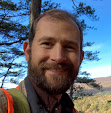Our healthy forests are blanketed with thick carpets of leaves, sticks, and branches; each one host to vital communities of decomposers. Every square inch of the healthy forest is teeming with life!
This thought fills me with wonder and spurs me on to learn more about nature’s relationships each day; relationships that bind fungi, moss, and lichen to decomposing sticks to nutrient-rich soil to trees to birds and other forest neighbors. That’s one relational strand among thousands or even millions!
It's one thing to know the name and something of the identity of individual animals, plants, and fungi who live in our forests. It's another thing altogether to understand something of the relationships that bind all of our wild neighbors together into one cohesive community. The well-being of the forest community is dependent on the health of its relationships; some symbiotic (mutually beneficial), some parasitic (one-sided), and some commensal (acquaintances who live nearby but have neither harmful nor beneficial effect on each other). I'm sure you can think of some symbiotic, parasitic, and commensal relationships in your human community. These different kinds of relationships bring a collective balance to the community as a whole.
I love spending time observing the relationships between all of these wild neighbors because that’s what a forest is. Our forests are complex webs of relationships not so different from the complex webs of relationships that you and I can’t possibly be alive or begin to make meaning of life without.
One of the things I enjoy most about being a nature guide are the opportunities I'm given to reveal nature's relationships and, in conversation with those whom I have the privilege of guiding, to make meaning of our own relationships with the natural world as well as with the other humans with whom we journey through life.



No comments:
Post a Comment